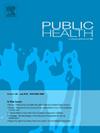大肠癌筛查的共享决策工具开发:全科医生和服务不足人群的共同创造过程
IF 3.9
3区 医学
Q1 PUBLIC, ENVIRONMENTAL & OCCUPATIONAL HEALTH
引用次数: 0
摘要
目的:欧洲指南强调了在结直肠癌(CRC)筛查中知情决策的重要性。然而,在佛兰德斯缺乏服务的人群和全科医生(gp)中促进这一过程的量身定制的工具仍然缺乏。本研究旨在与服务不足的人群和全科医生共同创建一个用于CRC筛查的共享决策(SDM)工具,捕捉他们对内容、设计和交付的需求和偏好。研究设计定性研究。方法在比利时法兰德斯不同地区开展两轮针对服务不足人群的6次焦点小组讨论,以及5次与全科医生的地方质量小组会议。定性数据分析使用修正基础理论分析(M-GTA)方法来确定关键主题。研究结果揭示了四个核心主题。第一个主题是“认识到筛查的障碍”,它确定了一些挑战,如缺乏时间、人员和工具来促进预防性对话,以及在CRC筛查中服务不足的人面临的语言和扫盲障碍。第二个主题是“从现有工具中学习”,突出了视觉效果和简单语言等成功元素,以及低可访问性和糟糕导航等局限性。第三个主题是“确定内容和设计”,揭示了全科医生寻求用户友好的在家检查工具,而服务不足的人则看重有关CRC风险因素和筛查成本的个性化和明确信息。最后一个主题是“确定整合战略”,强调了在实践中使用可持续发展机制工具进行预防性会谈时,采用结构化、个性化、协作式护理方法的重要性。结论提高SDM工具的可及性和相关性,特别是在内容和设计上针对服务不足的人群和全科医生,是克服语言和卫生素养等障碍的关键。尽管如此,需要进一步的测试来证实SDM工具在支持SDM筛查结直肠癌中的有效性。本文章由计算机程序翻译,如有差异,请以英文原文为准。
Shared decision-making tool development for colorectal cancer screening: A co-creative process with general practitioners and underserved people
Objectives
European guidelines stress the importance of informed decision-making in colorectal cancer (CRC) screening. However, tailored tools that facilitate this process among underserved people and general practitioners (GPs) in Flanders are still lacking. This study aimed to co-create a shared decision-making (SDM) tool for CRC screening with both underserved populations and GPs, capturing their needs and preferences for content, design, and delivery.
Study design
Qualitative study.
Methods
Two rounds of six focus group discussions with underserved people, and five local quality group meetings with GPs were conducted in different areas of Flanders, Belgium. Qualitative data were analyzed using a Modified-Grounded Theory Analytical (M-GTA) approach to identify key themes.
Results
Findings revealed four core themes. The first theme, 'Recognizing the Barriers to Screening', identifies challenges such as a lack of time, staff, and tools to facilitate preventive talks, as well as language and literacy barriers for underserved people in CRC screening. The second theme, 'Learning from Existing Tools', highlights successful elements like visuals and simple language and limitations such as low accessibility and poor navigation. The third theme, 'Determining the Content and Design,' reveals that GPs seek user-friendly tools for at-home viewing, while underserved people value personalised and clear information about CRC risk factors and screening costs. The final theme, 'Identifying Strategies for Integration,' stresses the importance of a structured, personalised, collaborative care approach in using the SDM tool for preventive talks in practice.
Conclusion
Enhancing the accessibility and relevance of SDM tools, particularly in content and design tailored to both underserved people and GPs, is the key to overcoming barriers such as language and health literacy. Nonetheless, further testing is needed to confirm the effectiveness of the SDM tool in supporting SDM in CRC screening.
求助全文
通过发布文献求助,成功后即可免费获取论文全文。
去求助
来源期刊

Public Health
医学-公共卫生、环境卫生与职业卫生
CiteScore
7.60
自引率
0.00%
发文量
280
审稿时长
37 days
期刊介绍:
Public Health is an international, multidisciplinary peer-reviewed journal. It publishes original papers, reviews and short reports on all aspects of the science, philosophy, and practice of public health.
 求助内容:
求助内容: 应助结果提醒方式:
应助结果提醒方式:


